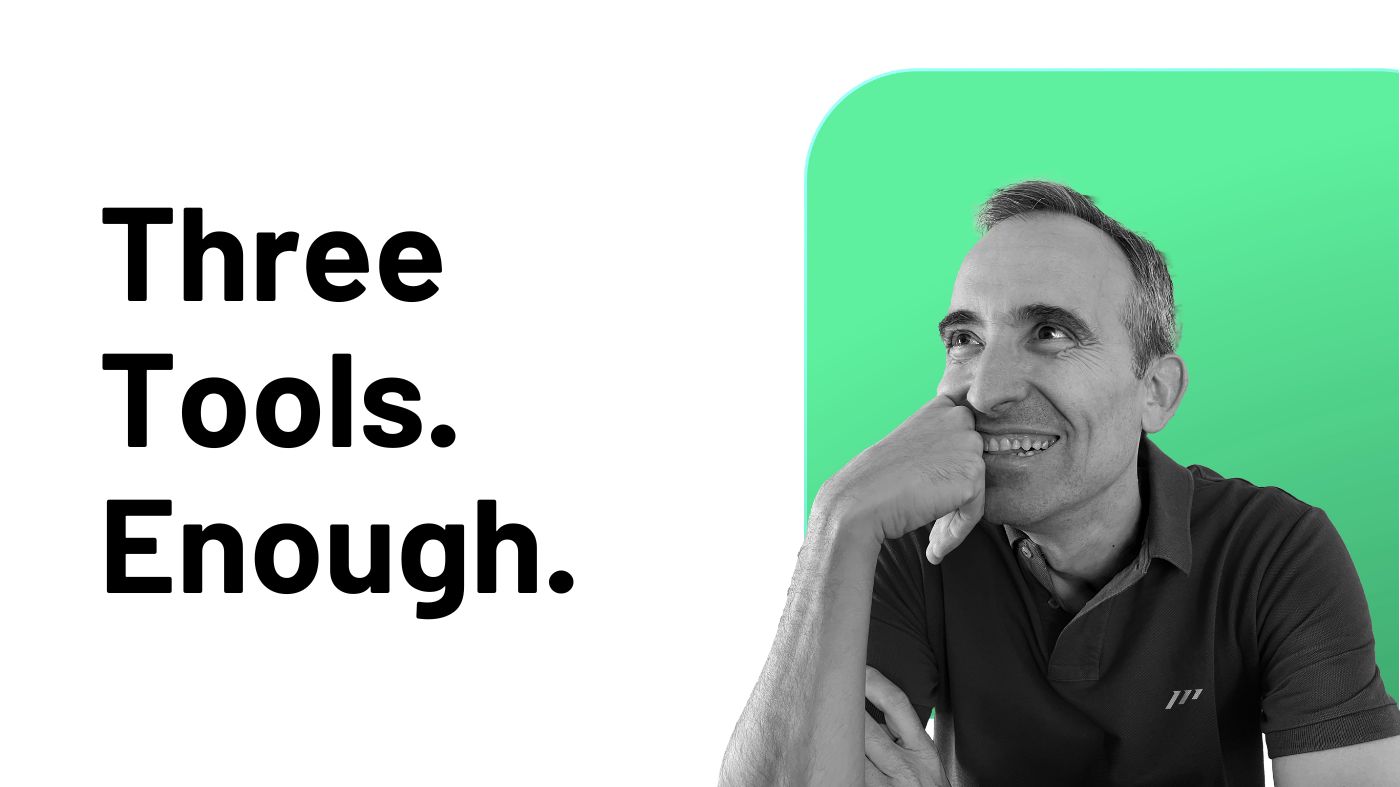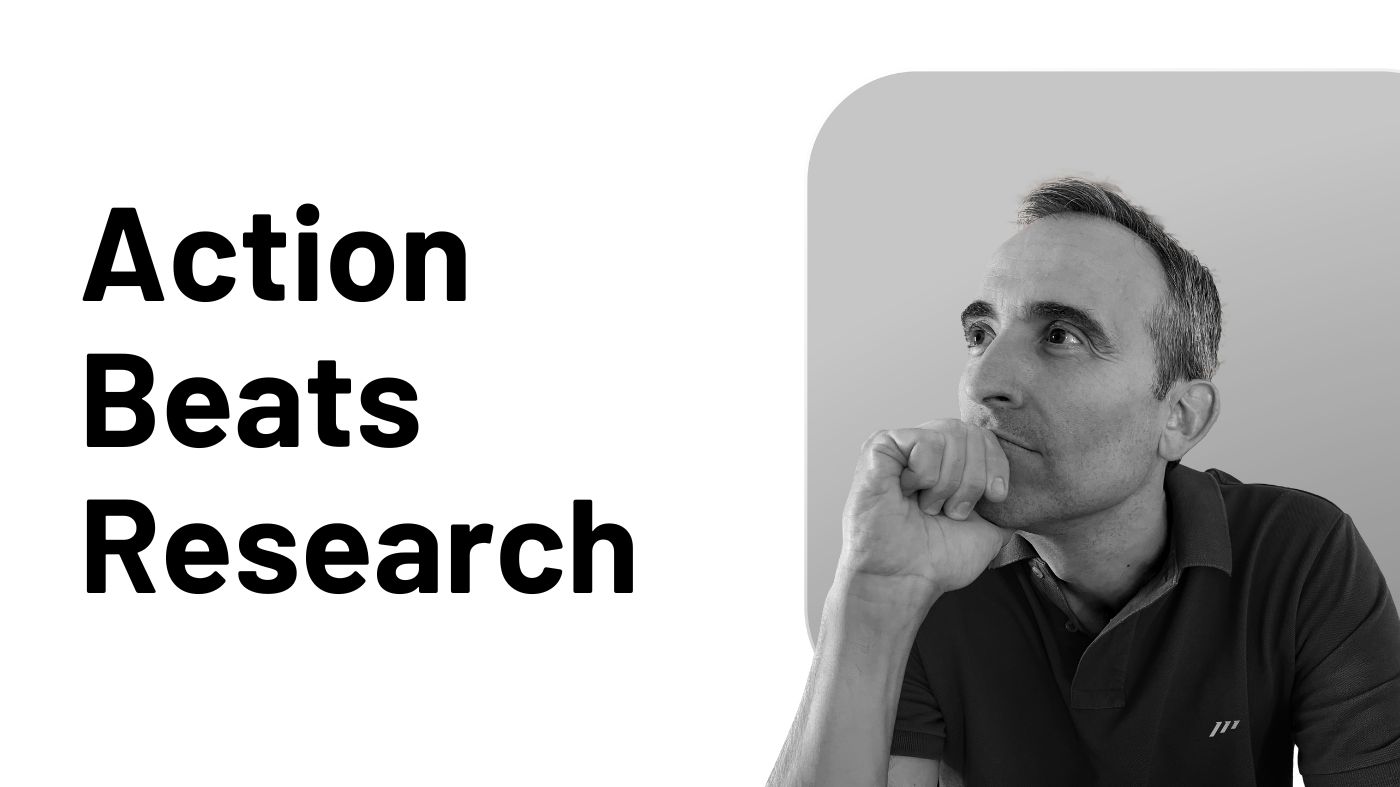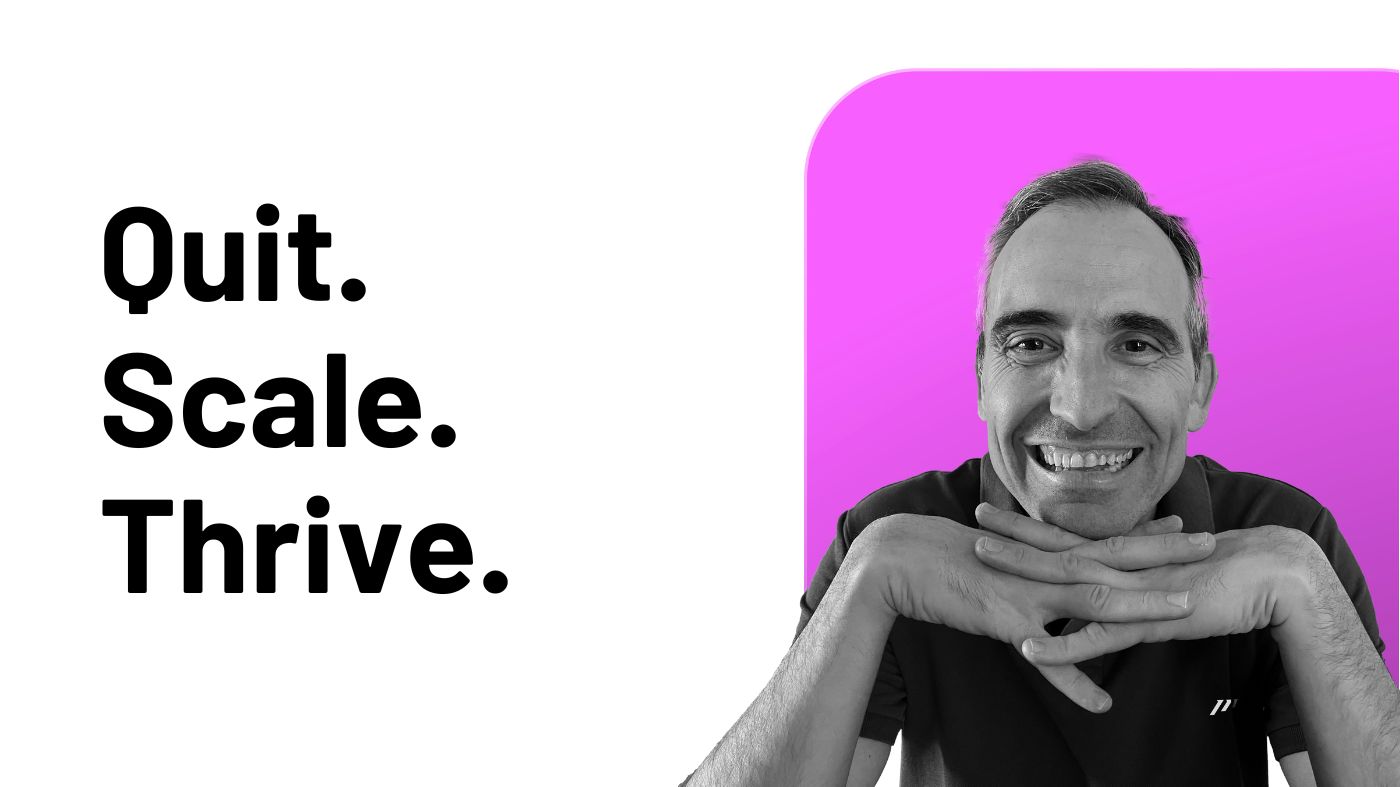There’s something irresistible about checkboxes in note-taking and PKM (Personal Knowledge Management) tools.
After decades of experimenting with productivity systems, I’ve discovered why they’re also one of the biggest traps for busy professionals.
This might sound counterintuitive, especially when tools like Heptabase, Craft, Notion, Obsidian, or Tana offer seductive checkbox features that promise “the perfect unified system.”
I call it “the checkbox illusion”: the compelling but ultimately destructive belief that combining your knowledge and task management into one tool will boost your productivity.
For years, I tried to manage my tasks using these non-pure task managers, convinced I was building “the ultimate productivity system.”
Depending on my mood or circumstances, I’d capture tasks in the note-taking/PKM tool I was using at that moment:
-
A quick checkbox in my morning notes.
-
An action item buried in a project document.
-
A reminder tucked into my weekly review.
The result? An absolute mess.
Tasks scattered across different notes. No Single Source of Truth (SSOT) for what actually needed to get done. No way to plan them out.
The constant anxiety of knowing something important was slipping through the cracks, but not knowing where to look for it.
So, if this sounds familiar, you’re not alone. As I’ve described, I’ve been exactly where you are right now.
But before I show you the way out, let me explain why smart, sophisticated professionals like you keep falling into this trap.
Because once you understand the seductive logic behind this approach, you’ll see why it feels so right, and why that feeling is exactly the problem.
The Hidden Mental Penalty: Why Your Brain Can’t Handle Both at Once
I get why this approach feels brilliant.
You’re already taking notes in these tools, capturing insights, building your knowledge base.
When a task emerges from that information, it seems natural to just add a checkbox right there. Keep everything connected. One tool to rule them all.
The logic is seductive: combine information and action in one place, and you’ll have perfect visibility into how your knowledge connects to your work.
No context switching. No duplicate entry. Just seamless productivity.
This thinking isn’t wrong. It’s actually quite sophisticated.
You recognize that information and action are deeply interconnected. Your best decisions come from synthesizing knowledge, and your most important tasks often emerge from Deep Thinking.
“Clarity yields mastery.” — Robin Sharma
But here’s what I learned the hard way: sound logic can lead to terrible systems.
The problem isn’t your willpower or organizational skills. It’s how your brain actually works.
Cognitive scientists have identified that your brain processes information and action through fundamentally different neural pathways. When you force both into the same system, you create what researchers call “cognitive interference”: your mental resources compete against each other instead of working together.
Here’s the fascinating part: when you’re deep in thought, synthesizing ideas or exploring connections, your brain activates what neuroscientists call the “default mode network.” You’re in an expansive, associative state, making connections across vast networks of knowledge.
But when you’re managing tasks, your brain shifts into “executive control mode,” activating the prefrontal cortex for prioritizing, categorizing, and making quick decisions about what to do next.
These aren’t just different mental processes: they actively interfere with each other.
Studies show that switching between these modes can reduce cognitive performance by up to 25%.
This is why you feel mentally exhausted when trying to manage both in the same tool. You’re constantly switching cognitive gears, and each switch costs you focus and clarity.
Beyond neuroscience, there’s a fundamental design issue: note-taking/PKM tools and task managers are built for opposite purposes.
The same qualities that make these tools excellent for managing knowledge make them problematic for managing action and vice versa.
When you try to force one tool to excel at both, you end up with a productivity system that’s mediocre at everything and excellent at nothing.
Note-taking/PKM tools excel at:
-
Capturing complex, interconnected information.
-
Supporting exploration and reflection.
-
Preserving context and nuance.
Task managers excel at:
-
Simple, actionable clarity.
-
Prioritization and filtering.
-
Time-based scheduling and reminders.
When you try to make one tool do both jobs, it becomes mediocre at everything.
Your rich contextual notes get cluttered with task management features you don’t need, while your tasks lack the robust management capabilities that dedicated note-taking/PKM tools provide.
The result?
Mental friction every time you open the tool, because you’re never sure whether you’re in “thinking mode” or “doing mode.”
The Two-World System That Elite Performers Swear By
Here’s the breakthrough that transformed my productivity and also the way thousands of busy professionals now work thanks to ICOR®, the methodology we’ve created at the Paperless Movement® to help busy professionals design, build, and implement their own productivity system end to end: treat information and action as two distinct but interconnected worlds.
Most professionals try to solve this problem by finding better tools. But the real solution isn’t about tools. It’s about architecture.
The first world is your Information Management system, which covers ICOR®’s first two stages: Input and Control.
This is where you capture, connect, and synthesize knowledge. Your notes, research, insights, and ideas live here.
The goal is exploration, understanding, and building context.
Consider this the digital segment of your critical thinking seamlessly synergizing with the physical part of your thought process.
“Productivity is never an accident. It is always the result of a commitment to excellence.” — Paul J. Meyer
The second world is your Action Management system, which corresponds to ICOR®’s third stage: Output.
This is where you prioritize, schedule, and execute work. Your tasks, deadlines, and commitments live here.
The goal is clarity, efficiency, and getting things done.
Think of this as the digital part of your brain’s command center, seamlessly integrated with your natural thinking processes focused on execution.
The magic happens when you keep these worlds separate but connected through intentional bridges.
When each world has its own dedicated system, both can be optimized for their specific purpose:
-
Your information world becomes richer because it’s not cluttered with task management overhead. You can think deeply without the constant pressure of uncompleted tasks staring at you.
-
Your action world becomes cleaner because it focuses purely on what needs to be done. No distractions from interesting but irrelevant information.
-
Your mental energy stops fragmenting between “thinking mode” and “doing mode.” You enter each system with clear intent and purpose.
Think of it like having a library and a workshop.
You wouldn’t try to use the same space for both deep research and hands-on building. Each serves a different purpose, but you can easily move between them when needed.
The key isn’t building walls between these worlds. It’s building smart bridges that connect them without contaminating either one:
-
When insights generate tasks, capture the task in your action world but link back to the original context if necessary.
-
When completing tasks requires research, reference your information world but keep the action item clean and focused.
This approach gives you the best of both worlds: powerful knowledge management and robust task execution, each system doing what it does best.
Instead of one mediocre productivity system trying to do everything, you have two excellent systems working in harmony.
That’s exactly what a productivity system end to end means: A system in which every component is optimized for its specific purpose, each contributing to a unified whole, and seamlessly transitioning from information to action.
The Practical Blueprint: How to Split Your Productivity System Without Losing Your Mind
The solution isn’t complicated, but it requires a fundamental shift in how you think about your tools.
Instead of trying to make one tool do everything, you create a specialized ecosystem where each tool excels at its primary function.
“Clarity precedes competence.” — Robin Sharma
Here’s your roadmap.
Primary Rule: Always route tasks to dedicated action tools
Any task should immediately go to your task management system based on its scope:
-
Individual tasks (non team-related) go to your task management tool: Todoist, Things, TickTick.
-
Team-related tasks go to your project management tool: Asana, ClickUp, Linear.
This isn’t just about organization. It’s about cognitive clarity.
When you open Todoist, your brain knows exactly what mode it’s in: execution mode.
Secondary Rule: Use the Inbox approach for unavoidable exceptions
Reality check: you’ll occasionally capture tasks in your note-taking/PKM tools. Maybe you’re brainstorming in Heptabase and realize you need to schedule a client call. Maybe you’re researching in Notion and identify three follow-up actions.
Don’t fight this. Instead, treat your note-taking/PKM tools as temporary inboxes for these stray tasks.
The key word is temporary. These tools become intermediate stops, not permanent residences.
Mark the task clearly in your note-taking/PKM tool, but understand this is just a holding pattern until you can process it properly into your dedicated action system.
The 15-Minute Implementation That Changes Everything
You don’t need to overhaul your entire productivity system overnight.
Here’s exactly how to implement the two-world approach in three focused steps that take less than 15 minutes total.
Step 1: Establish Your Action Headquarters
Choose one primary tool for each type of action in your life:
-
Individual tasks go to a dedicated task manager like, for example, Todoist, Things, or TickTick.
-
Team-related work belongs in your project management productivity system like, for example, Asana, ClickUp, or Linear.
The key is commitment, not perfection.
Pick your tools and stick with them for at least three months.
No more hedging your bets across multiple productivity tools or endlessly searching for the “perfect” solution.
Step 2: Create Clear Task Capture Habits
Train yourself to immediately recognize when something is a task versus an idea or note.
The moment you identify an action item, your brain should automatically route it to the correct system, the task management system, or the project management system.
This takes practice, but within two weeks, it becomes automatic.
You’ll start naturally thinking: “This is an action, not information” and your fingers will instinctively open your task or project manager instead of adding another checkbox to your notes.
Step 3: Implement Daily Bridge Routines
Here’s where most professionals fail: they set up the two-world productivity system but never create the bridges between them.
Without a consistent processing routine, tasks accumulate in the wrong places and the chaos returns.
The solution is daily processing routines. Not weekly. Not when you remember. Daily, non-negotiable routines.
Routines are the essential components that make any productivity system possible. Without them, you don’t have a productivity system at all, just a collection of tools that occasionally work together.
Your daily routines should include checking your various inboxes (including those stray tasks in your note-taking/PKM tools) and processing them:
-
Identify all the stray tasks scattered across your notes and note-taking/PKM tools.
-
Capture each one in your proper action management system.
-
Organize them by setting the day you want to tackle them.
-
Reference back to your original notes when you need the context.
By following these prearranged steps on autopilot, you save mental energy and ensure nothing falls through the cracks.
Daily routines create the bridge between your two worlds without contaminating either one. This isn’t busywork. It’s the bridge that keeps your two worlds connected without contaminating each other.
The first week feels like administrative overhead. By the fourth week, it becomes the most clarifying part of your day.
The Transformation: From Chaos to Complete Control
The transformation isn’t gradual. It’s immediate and profound. This is what we constantly see with the members of our Inner Circle Coaching Program.
Within the first week, you’ll experience something you may have forgotten: complete confidence in your productivity system.
No more nagging anxiety about forgotten tasks. No more mental energy wasted trying to remember where you put that important action item.
You’ll have a true Single Source of Truth for everything that needs to be done:
-
When someone asks about a deadline, you know exactly where to look.
-
When you’re planning your day, every task is in one place, properly prioritized and scheduled.
But the real transformation goes deeper than organization.
Your thinking becomes clearer because your information management tools can focus on what they do best: helping you synthesize insights and build knowledge.
Without task management clutter, your notes become more valuable, your research more focused, your strategic thinking more sophisticated. You enter Deep Work sessions without the cognitive interference of uncompleted tasks staring at you from the margins.
Your execution becomes sharper because your action management tools can focus on their strengths: prioritization, scheduling, and progress tracking.
Tasks get proper scheduled dates, clear context, and seamless integration with your planning productivity systems. When you open your task manager, everything you see demands action, nothing distracts from execution.
Most importantly, you stop context switching between “thinking mode” and “doing mode” every time you open a tool. Your mental energy compounds instead of fragmenting.
The liberation is immediate and visceral: you’re no longer managing your productivity system. Your productivity system is managing your work, freeing your cognitive resources for what actually matters: thinking and executing at your highest level.
This isn’t about adding more complexity to your life. It’s about removing the complexity that shouldn’t be there in the first place.
You stop fighting your tools and start leveraging them.




